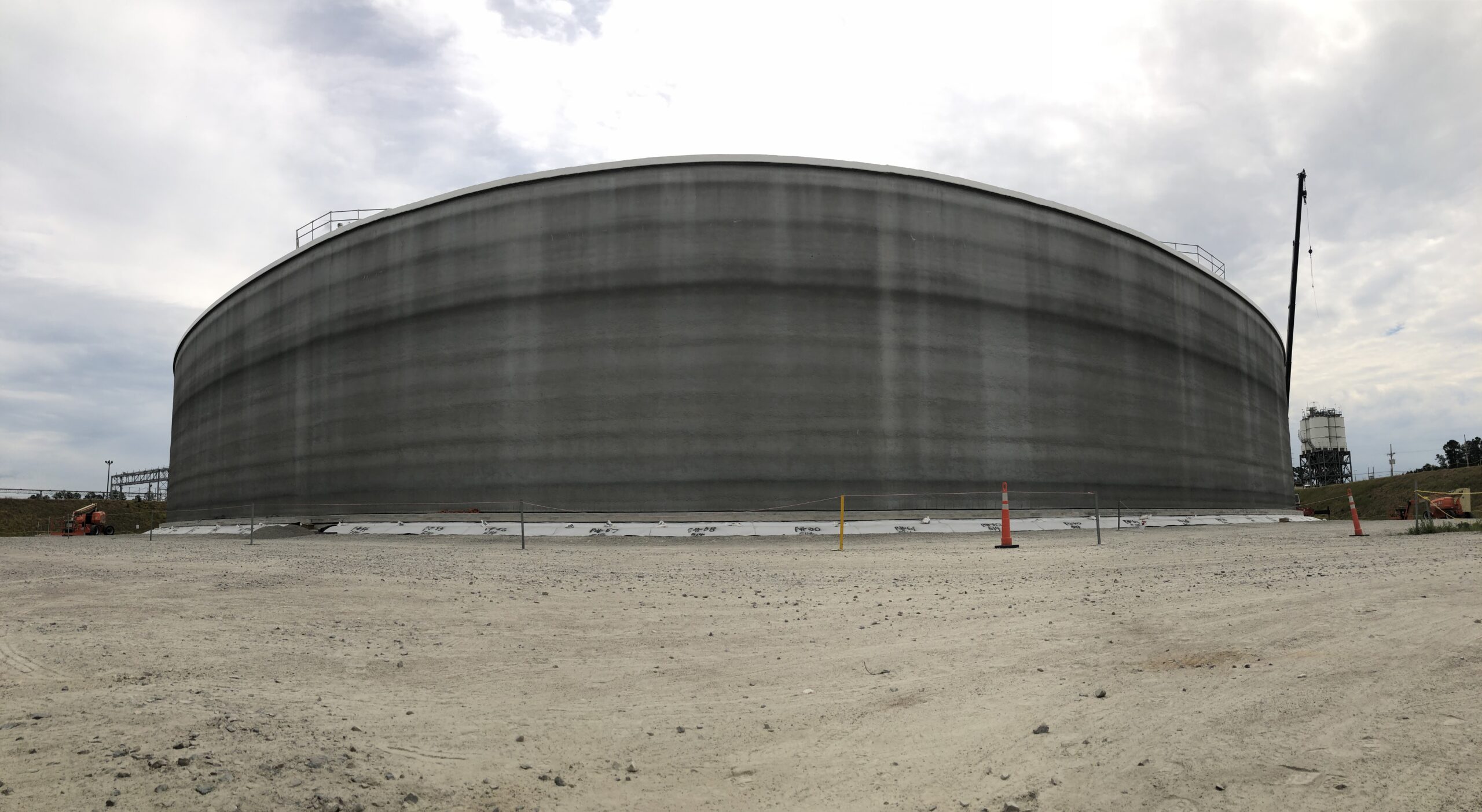Water treatment facilities rely on a complex network of tanks, pipes, and vessels to safely process and distribute clean water. However, these critical components face constant exposure to water, chemicals, and abrasive materials, leading to corrosion, leaks, and equipment failure over time.
That’s where rubber lining for water treatment comes in. As a proven solution, rubber linings provide a durable, non-permeable barrier that shields equipment from chemical damage, wear, and leaks, ensuring long-term efficiency and reliability.
Let’s explore how rubber-lined wastewater tanks and other water treatment components benefit from this advanced protective solution—and why investing in rubber lining is crucial for facilities looking to prevent damage.
The Corrosion Challenge in Water Treatment Equipment
Corrosion is one of the most significant threats to water treatment tanks, pipes, and vessels. Over time, exposure to water, harsh chemicals, and abrasive materials weakens metal surfaces. This leads to structural deterioration, leaks, and contamination risks.
If left unaddressed, corrosion can compromise system integrity, resulting in expensive repairs, operational downtime, and environmental hazards.
Common Causes of Corrosion in Water Treatment Equipment:
- Water Exposure – Even treated water contains minerals and dissolved gases that accelerate oxidation and rust formation on unprotected metal surfaces.
- Chemical Reactions – Water treatment processes rely on strong acids, alkalis, and disinfectants, which can aggressively corrode metal tanks and piping over time.
- Abrasive Materials – Solid particles in wastewater and sludge can wear down the internal surfaces of pipes and tanks, leading to premature failure.
The Solution: Rubber Linings
Rubber linings for water treatment equipment provide a durable, long-lasting protective solution to combat the damaging effects of corrosion. They’re designed to withstand continuous exposure to water, chemicals, and abrasive materials. The linings form a non-permeable shield that preserves the integrity of tanks, pipes, and vessels.
High-quality rubber linings in water treatment equipment prevent corrosion in water tanks by:
- Non-Permeable Protection – Rubber linings create a watertight, chemical-resistant barrier that prevents moisture, acids, and other corrosive substances from penetrating metal surfaces.
- High Resistance to Harsh Chemicals – Many water treatment processes involve strong acids, alkalis, and disinfectants that can degrade unprotected equipment. Rubber linings offer superior resistance to these substances, significantly reducing the risk of corrosion.
- Impact and Abrasion Absorption – Solid particles and sludge can erode metal surfaces over time in wastewater treatment. Rubber linings act as a cushion, absorbing impact and minimizing wear caused by abrasive materials.
- Custom Fit for Tanks, Pipes, and Vessels – Rubber linings can be tailored to fit the unique requirements of water treatment tanks, clarifiers, and chemical storage units, ensuring comprehensive protection across the entire system.
Investing in rubber lining for water treatment can extend equipment lifespan, reduce maintenance costs, and prevent operational disruptions—making it an essential solution for long-term efficiency and reliability.
How Wastewater Equipment Is Prone to Chemical Damage
Water treatment facilities rely on various chemical processes to remove contaminants, neutralize harmful substances, and ensure clean water output.
However, many harsh chemicals—such as chlorine, sulfuric acid, and sodium hydroxide—can aggressively degrade unprotected tanks and pipes. Over time, chemical exposure leads to corrosion, leaks, and equipment failure.
Chlorine can react with metal surfaces, causing pitting corrosion and structural weakening.
Sulfuric Acid is highly corrosive and can quickly deteriorate unlined steel tanks.
Sodium Hydroxide (Caustic Soda) can cause metal embrittlement over time.
Without proper protection, water treatment tanks and piping systems can suffer from rapid degradation, leaks, and contamination risks, leading to expensive repairs and regulatory violations.
How Rubber Lining is Effective Against Chemicals
- Superior Chemical Resistance – Chlorobutyl and bromobutyl rubber linings are designed to withstand prolonged exposure to acidic, alkaline, and oxidizing chemicals without degrading.
- Flexibility & Crack Resistance – Unlike some plastic coatings that become brittle over time, rubber linings remain flexible and resistant to cracking, ensuring long-term durability.
- Custom Fit for Maximum Protection – Rubber linings can be seamlessly applied to pipes, clarifiers, storage tanks, and wastewater treatment vessels, ensuring complete coverage and protection against chemical attack.
How Wastewater Equipment Is Prone to Leaks & Contamination Risks
Leaks in wastewater treatment tanks, pipes, and vessels pose a serious environmental and facility operations risk. A single breach can lead to hazardous chemical spills, water contamination, and regulatory violations.
Leaks can release toxic chemicals and untreated wastewater into surrounding soil and water sources, harming ecosystems and public health.
Water treatment facilities must meet strict industry regulations. A containment failure could lead to heavy fines, shutdowns, or legal liabilities.
Continuous leaks can weaken metal tanks and pipes, increasing the risk of catastrophic failures and costly repairs.
Preventing leaks is critical for maintaining system integrity and ensuring compliance with environmental and safety regulations.
How Rubber Lining is Effective Against Leaks & Contamination
- Seamless, Leak-Proof Protection – Rubber linings form a continuous, non-permeable barrier that seals tanks and pipes, preventing even minor leaks.
- Chemical & Moisture Resistance – Unlike unlined metal, which can corrode over time, rubber linings withstand exposure to water, acids, and industrial chemicals without degrading.
- Long-Term Durability – Rubber linings maintain flexibility, allowing them to expand and contract with temperature changes and pressure fluctuations, reducing the risk of cracks or seam failures

The 4 Key Benefits of Rubber Lining for Water Treatment Equipment
Investing in rubber lining for water treatment provides long-term protection for tanks, pipes, and vessels, ensuring they withstand the harsh conditions of wastewater processing. Some of the main benefits of rubber lining include:
1. Extends Equipment Lifespan
- Reduces corrosion and wear, protecting metal surfaces from exposure to water, chemicals, and abrasive materials.
- Increases the durability of tanks, pipes, and clarifiers, reducing the risk of early equipment failure.
- Ensures long-term reliability, preventing structural damage.
2. Reduces Maintenance Costs
- Rubber linings significantly decrease the need for frequent repairs and replacements by preventing corrosion and leaks.
- Less downtime for maintenance means greater operational efficiency and cost savings.
- Helps preserve equipment’s structural integrity, avoiding premature investments in new tanks or piping.
3. Enhances Environmental Protection
- Leak prevention minimizes contamination risks, ensuring that wastewater and hazardous chemicals remain contained.
- Protects surrounding ecosystems and groundwater from potential chemical exposure.
- Reduces the risk of expensive environmental cleanup efforts caused by spills or leaks.
4. Ensures Regulatory Compliance
- Meets industry standards for wastewater treatment equipment protection.
- Helps facilities comply with EPA, OSHA, and local wastewater treatment regulations.
- Avoids penalties, fines, and legal consequences associated with non-compliance.
The Bottom Line:
- Rubber linings are an essential investment for water treatment facilities. They extend equipment lifespan, reduce maintenance costs, prevent contamination, and maintain regulatory compliance.
- By choosing high-quality rubber lining solutions, treatment plants can operate safely, efficiently, and cost-effectively for years to come.
US RUBBER: The Smartest Investment for Long-Lasting Water Treatment Equipment
If you’re looking for high-quality rubber lining solutions, US RUBBER offers expert installation, top-tier materials, and customized solutions to meet your facility’s unique needs. With decades of experience, we provide reliable protection against corrosion, leaks, and chemical damage—helping your operation run smoothly and efficiently.
Contact our team today to learn how rubber lining can safeguard your water treatment operations.







